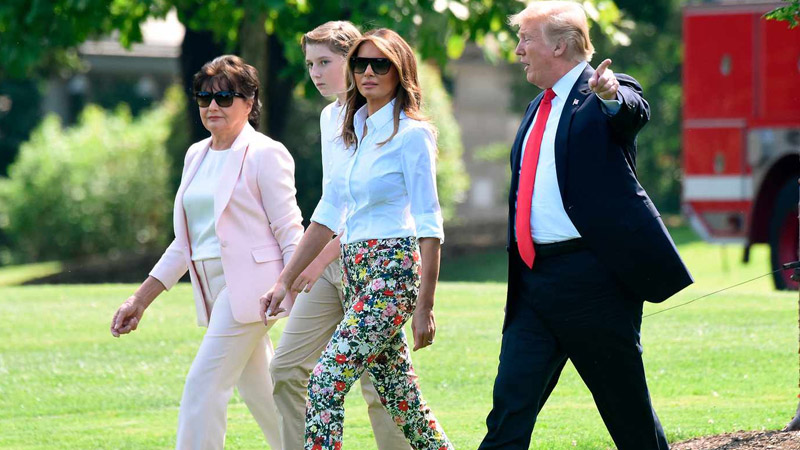In an intriguing turn of events, the immigration journey of Donald Trump’s mother-in-law, Amalija Knavs, has come to light, revealing a nuanced aspect of the former president’s stance on immigration policies. Knavs, who hailed from Slovenia, utilized a legal pathway to U.S. residency that Trump had vocally criticized and aimed to eliminate during his tenure.
This method, known as “chain migration,” allows U.S. citizens to sponsor immediate relatives, including parents, for permanent residency, or green cards. The Washington Post shed light on this matter, detailing how Melania Trump, Donald Trump’s wife, sponsored her mother, thereby facilitating her immigration to the United States through the very process her husband disparaged.
Donald Trump, throughout his presidency, expressed a strong desire to put an end to what he termed “chain migration,” advocating for stricter immigration policies and controls. Amalija Knavs, who passed away at the age of 78 in January, secured her legal permanent resident status in the U.S. in March 2010.
Her immigration records, as reported by The Washington Post, reveal that she took significant steps towards integrating into her new home country. In August 2017, shortly after Donald Trump assumed the presidency, Knavs applied for full U.S. citizenship, a move that further entwined the personal and political narratives within the Trump family, via The Daily Beast.
Knavs’ journey to citizenship included a citizenship test in the subsequent year, during which she successfully answered a sufficient number of questions to pass. However, she notably did not respond to a question about the “rule of law,” a principle often highlighted in discussions about governance and legal structures.
Additionally, her application mentioned her residence at Trump Tower in New York City, placing her at the heart of the Trump family’s personal and business empire. This revelation about Amalija Knavs’ immigration process adds a layer of complexity to the broader discourse on immigration policies in the U.S. especially considering the former president’s public opposition to the very mechanism that allowed his mother-in-law to become a resident and later a citizen.
The story underscores the often intricate and personal dimensions of immigration, a topic that remains one of the most debated and polarizing issues in American politics and society.

